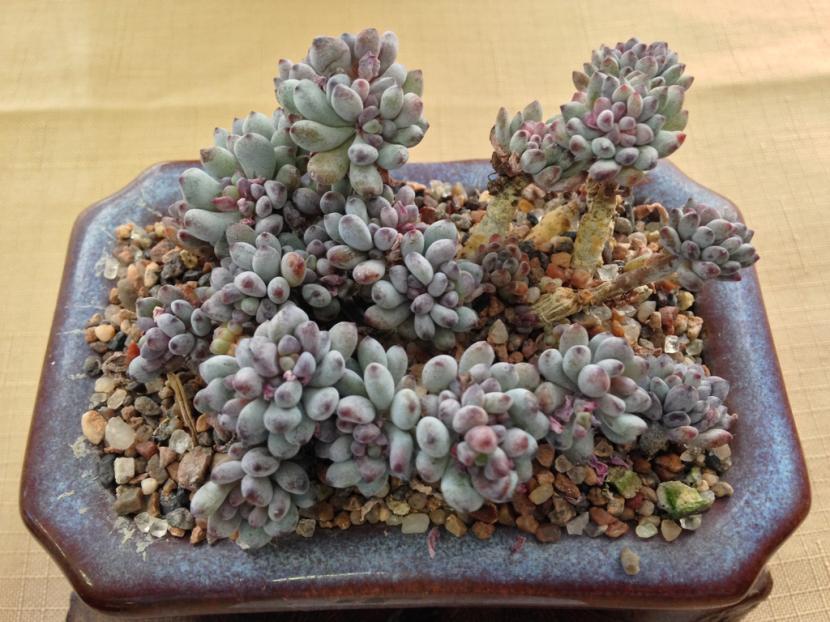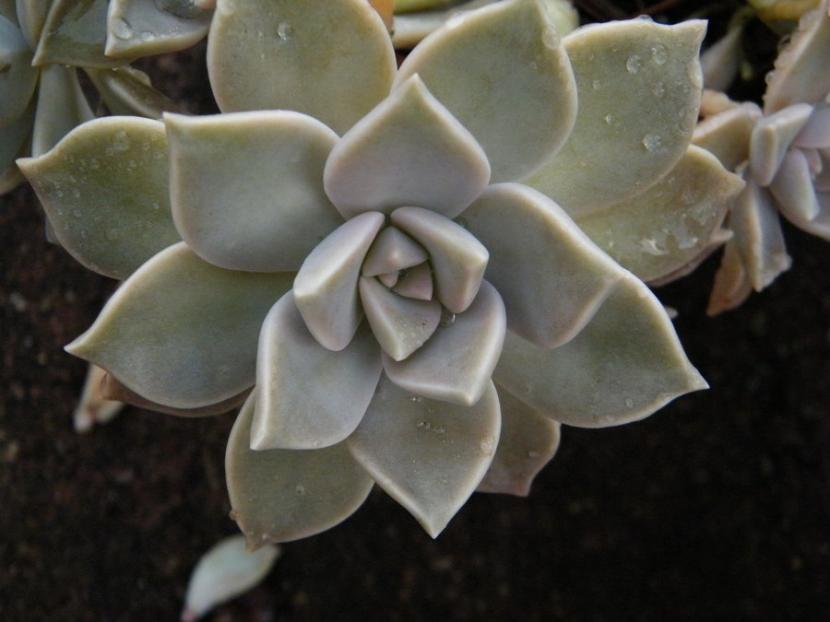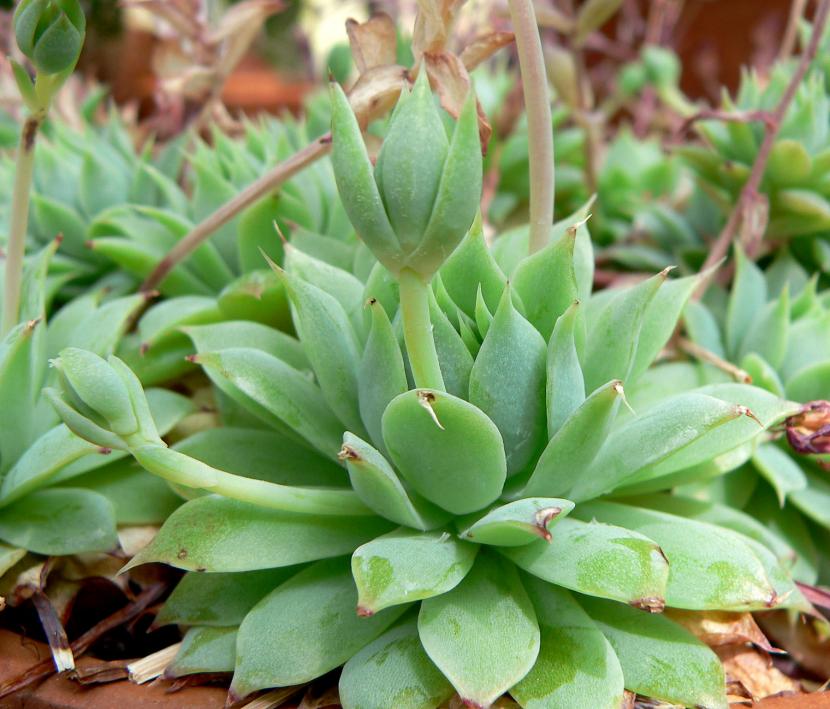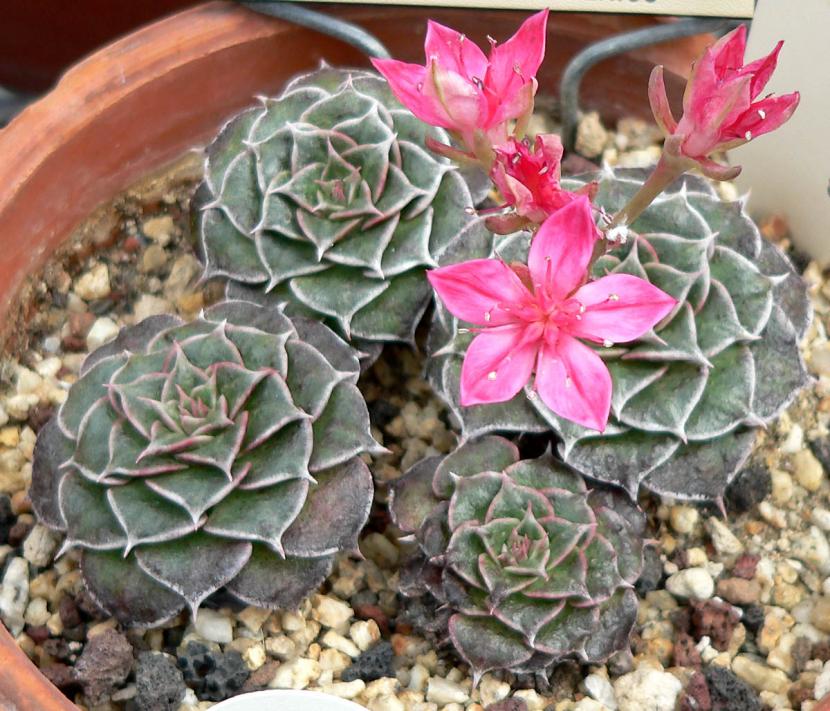
Graptopetalum pachyphytum
Thorny plants are very decorative, but ... succulent plants are not far behind. And it is that there are species with leaves distributed in such a way that they look like a flower, and others like our protagonists, that just by seeing them many of us we fall in love.
They are ideal to have in pots, make compositions, decorate the patio or home ... Not only are they very beautiful, but also their cultivation is really very simple. Meet the Graptopetalum.

Paraguayan Graptopetalum
This genus of succulent plants does not have thorns; on the contrary, its leaves are fleshy, because that is where they have their greatest reserves of water. It includes around 18 accepted species, but if they seem few to you… you should know that very interesting hybrids appear from time to time. In fact, It is common to cross the Graptopetalum with the Echeveria, since both genera belong to the same family (Crassulaceae), thus giving rise to a botanical genus: Graptoveria.
The Graptopetalum are native to Arizona and Mexico, where they live in areas exposed to the sun and whose rainfall is scarce. The soil in which they grow and develop is very porous, thus avoiding waterlogging.

Graptopetalum macdougalii
It is, therefore, very necessary use a sandy substrate or, if it cannot be obtained, mix black peat with perlite in equal parts. However, let me also tell you that they can live only in peat, as long as the risks are controlled. It is important that we water once a week in summer, and every 15 days the rest of the year (unless we see that the land is very dry).
Located in full sun, they can withstand temperatures of up to -2ºC. If winter is much colder in your area, you can have it indoors while spring arrives. Place it in a very bright room, away from drafts, and it will pass those months without problems 🙂.

Graptopetalum »Tacitus Bellus»
Do you have in your collection?
Hi! I have just acquired my first succulent but I am not sure what species it is and therefore I do not know what care I should give it; at the flower shop where they sold it to me they couldn't tell me its name.
It does not have thorns or flowers (nor does it seem that it will have in the future, although it is still very small) and its leaves are fleshy, they remind me a lot of artichokes.
I just want to know if I should give it direct sunlight or if it can be inside a room, how much water it needs and those basic things.
In this link ( http://oi60.tinypic.com/257hpfr.jpg ) I uploaded a photo that I just took, in case you can see it and tell me something about it. Any information, I will appreciate it very much since, as I said, I do not know anything about it.
Regards!
Hello Elle.LaVie.
Your little plant looks like an Aeonium canariense (check if it has hairs on the leaves) something lacking in light. It can be indoors as long as it is in a room where there is a lot of natural light, but ideally it should be outdoors.
Water it by letting the substrate dry completely between waterings, and you will have a beautiful plant.
a greeting
Looks like a Sedum palmeri to me.
Hi carlos.
Yes, the Graptopetallum MacDougalli and the Sedum palmeri are very similar, but the flowers are different: those of the first have 5 reddish petals, while those of the second also have 5 petals, but they are yellow.
A greeting.
Ok, Monica, but there are no flowers in Elle.LaVie's photo. I don't understand you, Aeonium canariense or Graptopetallum MacDougalli?
A greeting.
Ah, okay, you meant Elle's.
I think that Aeonium, due to the fleshy leaves and the distribution of the leaves that are emerging again:
Aeonium: http://www.publicdomainpictures.net/pictures/10000/velka/1081-12707454404rxG.jpg
Graptopetalum: https://upload.wikimedia.org/wikipedia/commons/8/8a/Graptopetalum_macdougallii_2015-06-01_OB_233b.jpg
What do you think?